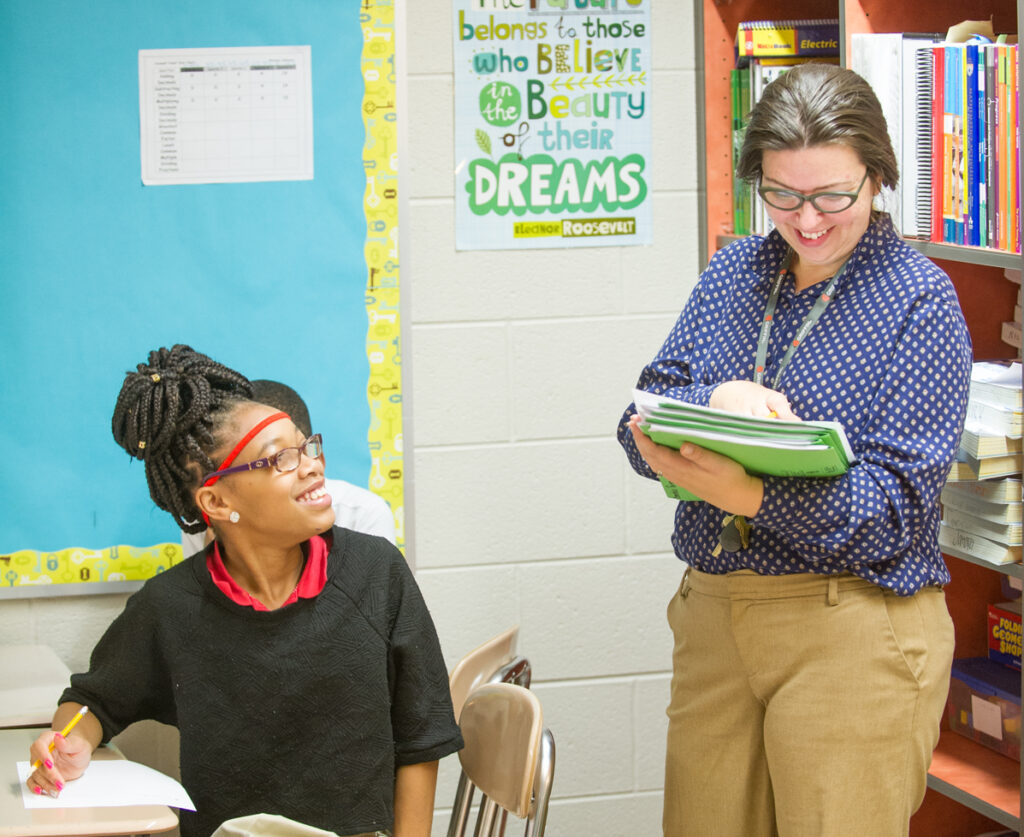
The following is an excerpt from the foreword to The Language of Learning: Teaching Students Core Thinking, Listening, and Speaking Skills.
Students enter our school doors with a vision of themselves as learners, filled with hopes and dreams for learning. That’s what I firmly believe. With them, they bring an innate curiosity and a thirst to discover words, numbers, music, and art; to hear, tell, and make meaning of stories from the past and stories that are yet unfolding; to explore the wonders of faraway planets and uncover the marvels of the one named Earth—and most importantly, to learn all the nitty-gritty details of whatever captures their own interests and helps to manifest their hidden gifts and talents.
It is their expectation that school will give them opportunities to develop their own ideas about facts, discover how things work, invent and innovate, put new skills into use, develop self-confidence, make good decisions, learn to play well with others, connect with classmates, and have fun doing so.
As their teachers, we hold in our hearts our own hopes and dreams for them, too. We want them to engage in academic rigor and contribute to classroom learning—and we also want them to become the very best people they can be; to live the very best lives they can live; and to contribute as best they can to their families, schools, communities, and our world. Ultimately, what we hope they learn from us is—at its core—the stuff they’ll need for a satisfying and successful life. But to learn all that, students must master what is essentially a new language—the language of learning.
There is a universal language that all schools have, regardless of their unique school culture. Much more than speech, this language of learning is a set of concrete skills and strategies for thinking, then speaking; for listening, then thinking; for translating curiosity into well-thought-out questions; for building on others’ ideas; and taking a conversation and train of thought to higher and higher levels. We may, at times, assume that students will somehow access and naturally develop fluency in the language of learning and therefore won’t need us to name it, much less teach it.
Yet, achieving fluency in the language of learning does not automatically happen for children. We must deliberately help them master the set of requisite skills and socially shared conventions and expectations that advances high-quality learning. This book will help you do just that by giving you practical tools and resources to move your students toward fluency in five core competencies:
Children have always needed these competencies in order to be highly engaged, self-motivated thinkers, doers, creators, and learners. Moreover, a student’s mastery of these competencies is foundational for reaching the rigor inherent in the Common Core State Standards and for successfully navigating our rapidly changing global community. The content, strategies, and resources presented in this book will help you teach, coach, and encourage students in developing and demonstrating these competencies.
And yes, these skill sets can be challenging for students to master. Make no doubt about it, we ourselves will at times need to develop new mindsets and flex new teaching muscles to teach these skills effectively. But I have faith in every child’s ability to learn them well and every teacher’s ability to teach them well. So I invite you to roll up your sleeves and dive into this worthy work. After all, our teaching is more rewarding when we face challenges with our students, hurdle over the obstacles together, and enjoy the rewards of progress, big and small.
This book’s content and strategies for teaching the language of learning are integral to the Responsive Classroom, a research-based approach to teaching that enables educators to create engaging academics for every child, build a positive learning community, and manage classrooms effectively. As leader of the organization behind this approach, I thoroughly enjoyed watching a bright nugget of an idea for this book become a reality. I’m confident that this book will serve you well for many years to come. It’s exciting to envision all our children across the nation becoming fluent and highly competent in the language of learning and in developing the critical skills they need for success today, tomorrow, and far into the future.
Lora Hodges is executive director of Center for Responsive Schools.